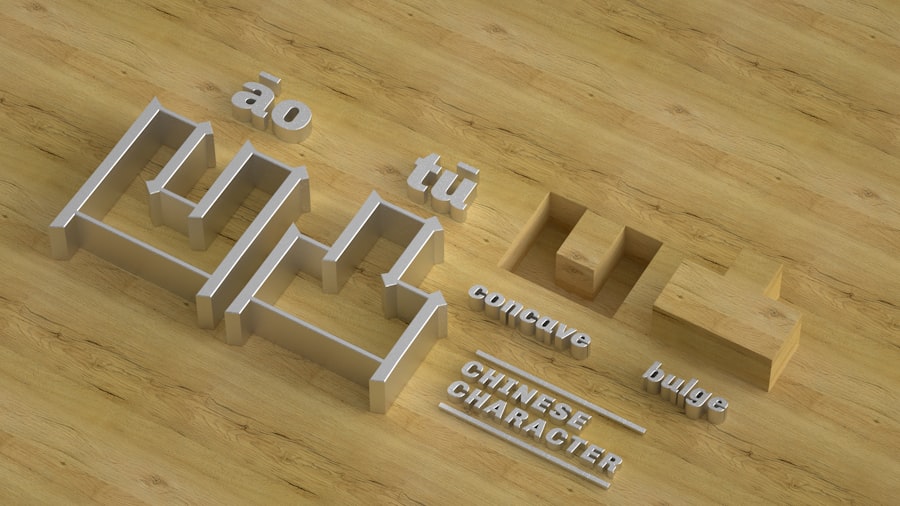Microarchitecture refers to the underlying design and organization of a computer’s central processing unit (CPU) or other processing units. It encompasses the way in which the various components of a processor are arranged and how they interact with one another to execute instructions. This includes the design of the instruction set architecture (ISA), data paths, control units, memory hierarchy, and execution units.
While the ISA defines the set of instructions that a processor can execute, microarchitecture determines how these instructions are implemented at a lower level, influencing performance, power consumption, and overall efficiency. At its core, microarchitecture is about optimizing the execution of instructions to achieve better performance metrics. This involves decisions about how many execution units to include, how to manage caches, and how to implement pipelining and parallelism.
For instance, a microarchitecture might employ techniques such as superscalar execution, where multiple instructions are processed simultaneously, or out-of-order execution, which allows instructions to be executed as resources become available rather than strictly in the order they appear. These design choices can significantly impact the speed and efficiency of a processor, making microarchitecture a critical area of study in computer engineering.
Key Takeaways
- Microarchitecture refers to the design and organization of a computer’s internal components, including the CPU, memory, and input/output systems.
- Microarchitecture plays a crucial role in determining a computer’s performance, power efficiency, and overall capabilities.
- The evolution of microarchitecture has led to significant advancements in computing, including the development of multi-core processors and improved instruction set architectures.
- Key components of microarchitecture include the instruction set architecture, pipeline structure, and memory hierarchy.
- Challenges and innovations in microarchitecture include addressing power consumption, improving instruction-level parallelism, and optimizing for emerging workloads such as artificial intelligence and machine learning.
The Importance of Microarchitecture in Computing
The significance of microarchitecture in computing cannot be overstated. It serves as the foundation upon which modern computing systems are built, directly influencing their performance and efficiency. As applications become increasingly demanding, the need for processors that can handle complex computations quickly and efficiently has grown.
Microarchitecture plays a pivotal role in meeting these demands by enabling innovations that enhance processing capabilities while managing power consumption. For example, in high-performance computing environments, such as data centers or scientific simulations, microarchitectural advancements can lead to substantial improvements in throughput and latency. Processors designed with advanced microarchitectural features can execute more instructions per clock cycle, thereby increasing overall performance.
Additionally, as mobile devices become more prevalent, the importance of power-efficient microarchitectures has surged. Designers must balance performance with energy consumption to extend battery life while still delivering robust processing capabilities. This dual focus on performance and efficiency underscores the critical role that microarchitecture plays in shaping the future of computing.
The Evolution of Microarchitecture

The evolution of microarchitecture has been marked by significant milestones that reflect advancements in technology and shifts in computing needs. Early microprocessors, such as Intel’s 4004 released in 1971, were relatively simple in design, featuring a limited instruction set and basic processing capabilities. As technology progressed, so did the complexity of microarchitectures.
The introduction of the x86 architecture in the late 1970s marked a turning point, allowing for more sophisticated instruction sets and paving the way for future developments. The 1990s saw the rise of superscalar architectures, which enabled processors to execute multiple instructions simultaneously. This was a significant leap forward, as it allowed for greater utilization of available resources and improved performance without increasing clock speeds.
The introduction of out-of-order execution further enhanced this capability by allowing processors to execute instructions as soon as their operands were ready, rather than strictly adhering to program order. As we moved into the 21st century, multi-core processors became prevalent, allowing for even greater parallelism and efficiency. This evolution reflects not only technological advancements but also an ongoing response to the increasing demands placed on computing systems by applications ranging from gaming to scientific research.
Key Components of Microarchitecture
| Component | Description |
|---|---|
| Instruction Fetch | Responsible for fetching instructions from memory |
| Instruction Decode | Decodes the fetched instructions into micro-operations |
| Execution Units | Perform arithmetic and logic operations |
| Memory Subsystem | Handles data access and storage |
| Control Unit | Coordinates the operation of all components |
Understanding microarchitecture requires a closer examination of its key components, each of which plays a vital role in determining a processor’s performance characteristics. One of the most critical components is the execution unit, which is responsible for carrying out arithmetic and logical operations. Modern processors often include multiple execution units to facilitate parallel processing, allowing them to handle several instructions simultaneously.
Caches significantly reduce latency by minimizing the time it takes for the processor to access data from main memory. The design of these caches—such as their size, associativity, and replacement policies—can greatly influence overall system performance.
Additionally, the control unit orchestrates the flow of data within the processor, managing instruction fetching, decoding, and execution while ensuring that resources are allocated efficiently. Pipelining is another fundamental aspect of microarchitecture that enhances instruction throughput. By breaking down instruction execution into discrete stages—such as fetching, decoding, executing, and writing back results—pipelining allows multiple instructions to be processed simultaneously at different stages of completion.
This technique can significantly increase instruction throughput but also introduces challenges such as hazards that must be managed effectively.
Challenges and Innovations in Microarchitecture
As microarchitecture continues to evolve, it faces several challenges that require innovative solutions.
As processors become more powerful and capable of executing more instructions per cycle, they also consume more energy.
This is particularly critical in mobile devices where battery life is paramount. Designers are increasingly focusing on creating energy-efficient architectures that can deliver high performance without excessive power draw. Thermal management is another significant challenge associated with advanced microarchitectures.
As processors operate at higher speeds and power levels, they generate more heat, which can lead to thermal throttling or even hardware failure if not managed properly. Innovations such as dynamic voltage and frequency scaling (DVFS) allow processors to adjust their power consumption based on workload demands, helping to mitigate thermal issues while maintaining performance. Moreover, as we approach physical limits in semiconductor technology—such as Moore’s Law slowing down—designers are exploring alternative materials and architectures.
For instance, 3D stacking technologies allow for denser integration of components while improving interconnectivity and reducing latency. Additionally, research into quantum computing and neuromorphic architectures presents exciting possibilities for future microarchitectural designs that could revolutionize how computations are performed.
Applications of Microarchitecture in Different Industries
Microarchitecture has far-reaching implications across various industries, each benefiting from tailored designs that meet specific computational needs. In the realm of consumer electronics, for instance, smartphones rely on highly optimized microarchitectures to balance performance with energy efficiency. Processors designed for mobile devices often incorporate specialized cores for handling tasks like graphics processing or machine learning algorithms while maintaining low power consumption.
In the automotive industry, microarchitectural advancements are crucial for developing autonomous driving technologies. High-performance processors are required to process vast amounts of sensor data in real-time while ensuring safety and reliability. The integration of specialized processing units for tasks such as image recognition or sensor fusion exemplifies how microarchitecture can be tailored to meet industry-specific requirements.
Healthcare is another sector where microarchitecture plays a vital role. Medical imaging technologies rely on powerful processors capable of handling complex algorithms for image reconstruction and analysis. The ability to process large datasets quickly can lead to faster diagnoses and improved patient outcomes.
Furthermore, advancements in microarchitecture enable the development of wearable health monitoring devices that require efficient processing capabilities while remaining energy-efficient.
Future Trends in Microarchitecture
Looking ahead, several trends are poised to shape the future of microarchitecture significantly. One prominent trend is the continued push towards heterogeneous computing architectures that combine different types of processing units—such as CPUs, GPUs, and specialized accelerators—on a single chip. This approach allows for greater flexibility and efficiency by enabling workloads to be distributed across various processing units based on their specific strengths.
Another trend is the increasing importance of artificial intelligence (AI) and machine learning (ML) in shaping microarchitectural designs. As AI applications become more prevalent across industries, there is a growing demand for processors optimized for machine learning tasks. This has led to the development of dedicated AI accelerators that can perform matrix multiplications and other operations at unprecedented speeds.
Additionally, advancements in fabrication technologies are enabling smaller transistors and more compact designs, allowing for increased integration density on chips. This trend not only enhances performance but also contributes to energy efficiency by reducing interconnect lengths and improving signal integrity.
Exploring the Potential of Microarchitecture in Advancing Technology
The potential of microarchitecture extends beyond mere performance improvements; it holds the key to unlocking new technological frontiers across various domains. In fields such as artificial intelligence and big data analytics, optimized microarchitectures can facilitate faster processing times for complex algorithms that require extensive computational resources. This capability can lead to breakthroughs in areas like natural language processing or real-time data analysis.
Moreover, as we venture into an era characterized by ubiquitous computing—where devices are interconnected and capable of processing data continuously—the role of microarchitecture becomes even more critical. Edge computing architectures designed with low-latency processing capabilities will be essential for applications requiring real-time decision-making based on sensor data from IoT devices. Furthermore, advancements in quantum computing present an exciting frontier for microarchitectural innovation.
While still in its infancy, quantum processors require entirely new architectural paradigms that differ fundamentally from classical computing approaches. Research into quantum microarchitectures could pave the way for solving problems currently deemed intractable by classical computers. In summary, microarchitecture serves as a cornerstone of modern computing systems, influencing everything from performance metrics to energy efficiency across diverse industries.
As technology continues to evolve at an unprecedented pace, understanding and innovating within this domain will be crucial for driving future advancements across all sectors reliant on computational power.
Microarchitecture, a crucial aspect of computer engineering, deals with the way a given instruction set architecture (ISA) is implemented in a processor. It involves the design and organization of the processor’s components, such as the control unit, arithmetic logic unit, registers, and cache. Understanding microarchitecture is essential for optimizing the performance and efficiency of processors. For those interested in the logical foundations that underpin such technological advancements, the article An Introduction to Many-Valued Logic: Historical Development, Relations, and Applications provides valuable insights into the evolution and application of logic systems, which are fundamental to the development of microarchitectural designs.



















+ There are no comments
Add yours